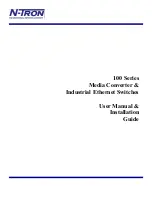
27
D-Link DGS-1016D/DGS-1024D User Manual
Section 5 - DIP Switches
EEE
IEEE 802.3az Energy-Efficient Ethernet (EEE) is the first standard in the history of Ethernet to address proactive reduction in
energy consumption for networked devices. The IEEE 802.3 EEE standard defines mechanisms and protocols intended to reduce
the energy consumption of network links during periods of low utilization, by transitioning interfaces into a low-power state
without interrupting the network connection.
Flow Control
As the demand on network resources grow, due to higher and higher amounts of data being generated from applications and
users, individual network links may be pushed to their limit. This is especially the case where multiple network links aggregate
to generate many times more data than any single link can handle. In this scenario, switch packet buffer memory will quickly
be depleted and overall network performance will decrease due to continued data retransmission of dropped packets. In the
event that a bottleneck exists, such as multiple users trying to transfer data to a network server at the same time, enabling
the flow control feature of this switch may help to alleviate network congestion at the expense of total network throughput.
The flow control feature of this switch works by sending Ethernet "PAUSE" frames defined by the IEEE 802.x standard to multicast
address 01-80-C2-00-00-01. Upon reception of this frame, the sender will hault transmission for a specificied period of time.
An assessment of currently employed networking technologies should be made before enabling flow control.
Note:
The switch must be power cycled after changing DIP switch settings for new settings to take effect.
Summary of Contents for DGS-1024D G2
Page 1: ......







































